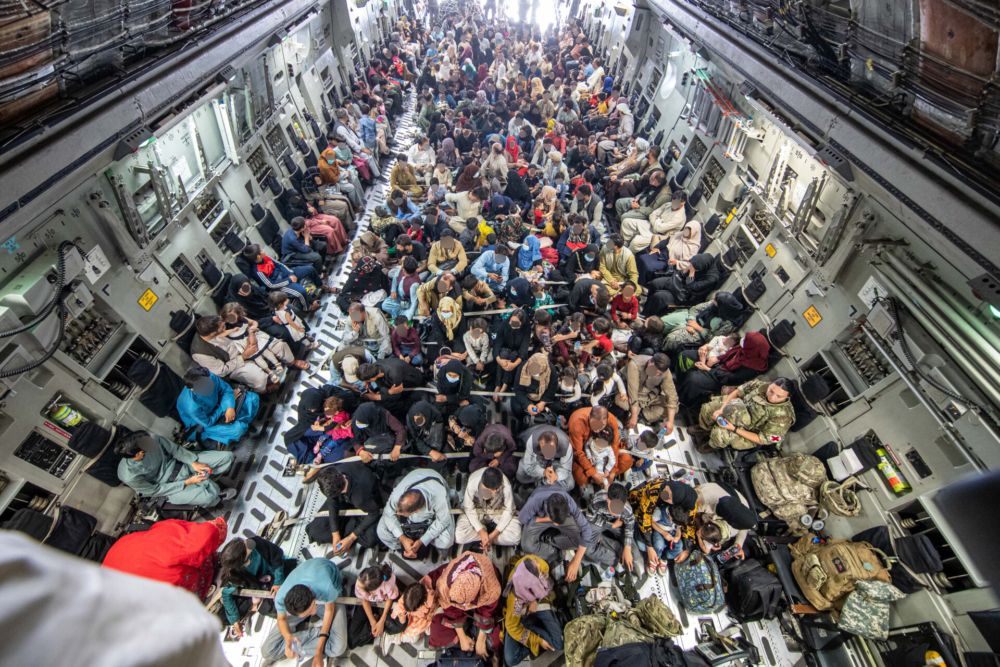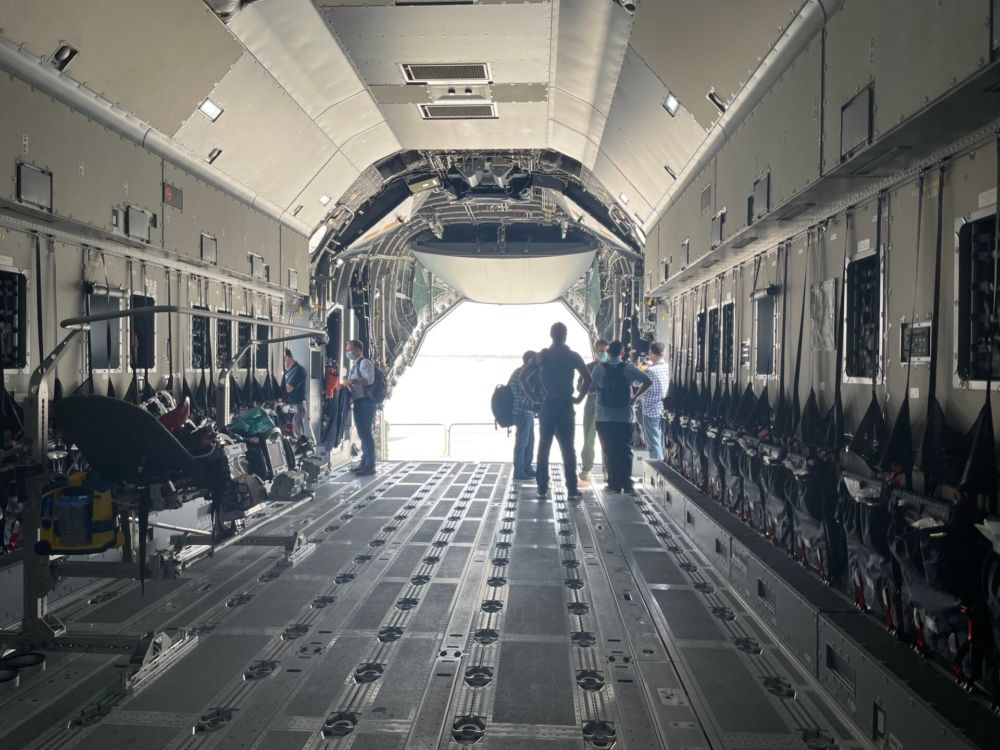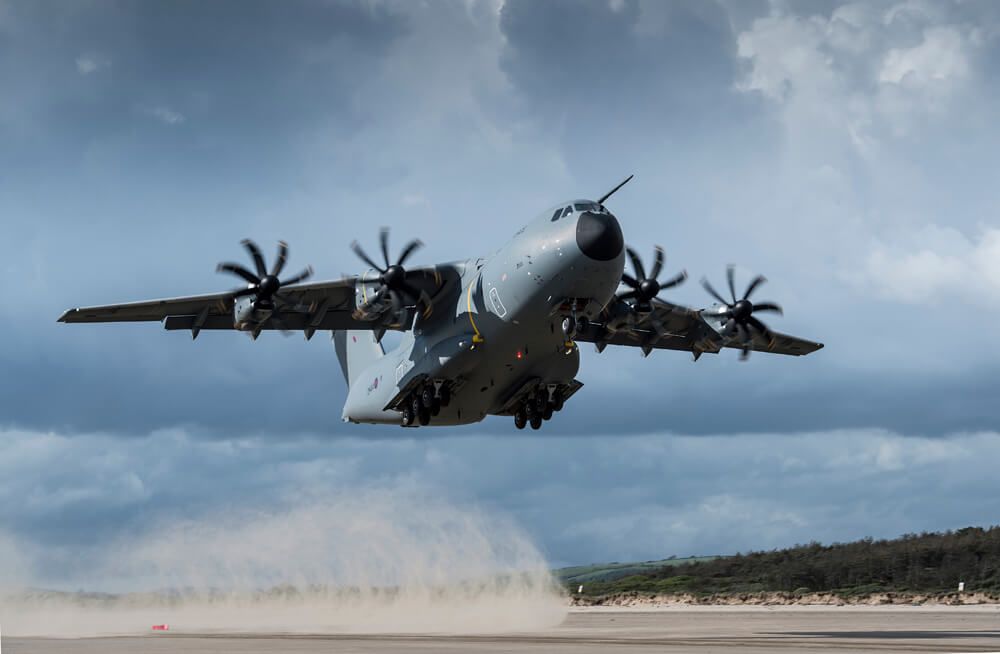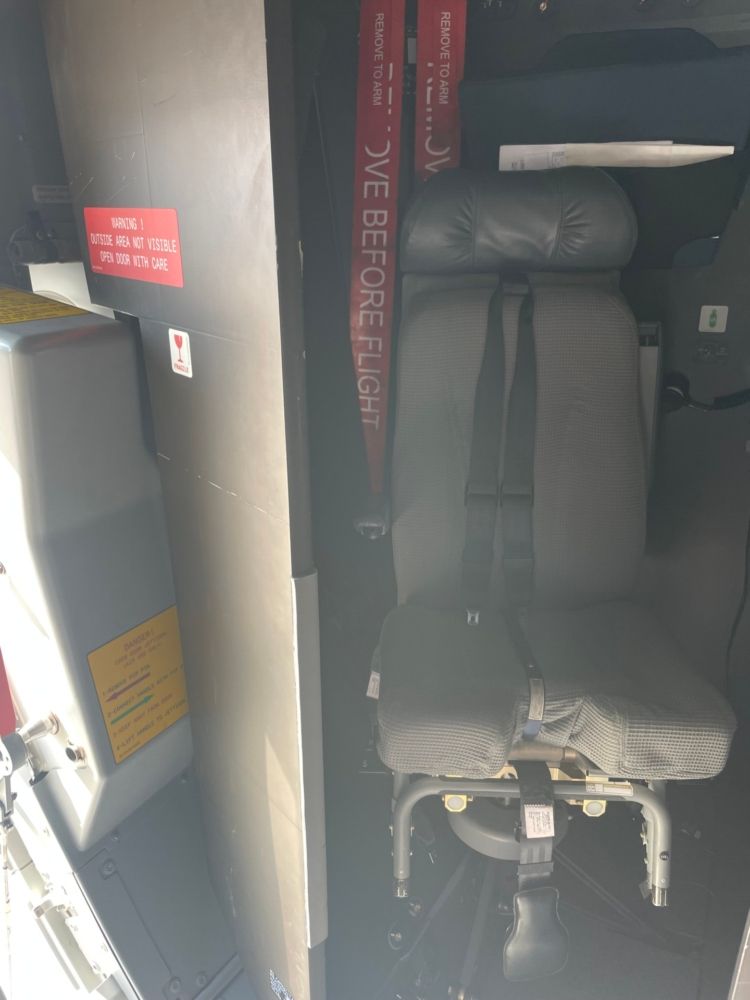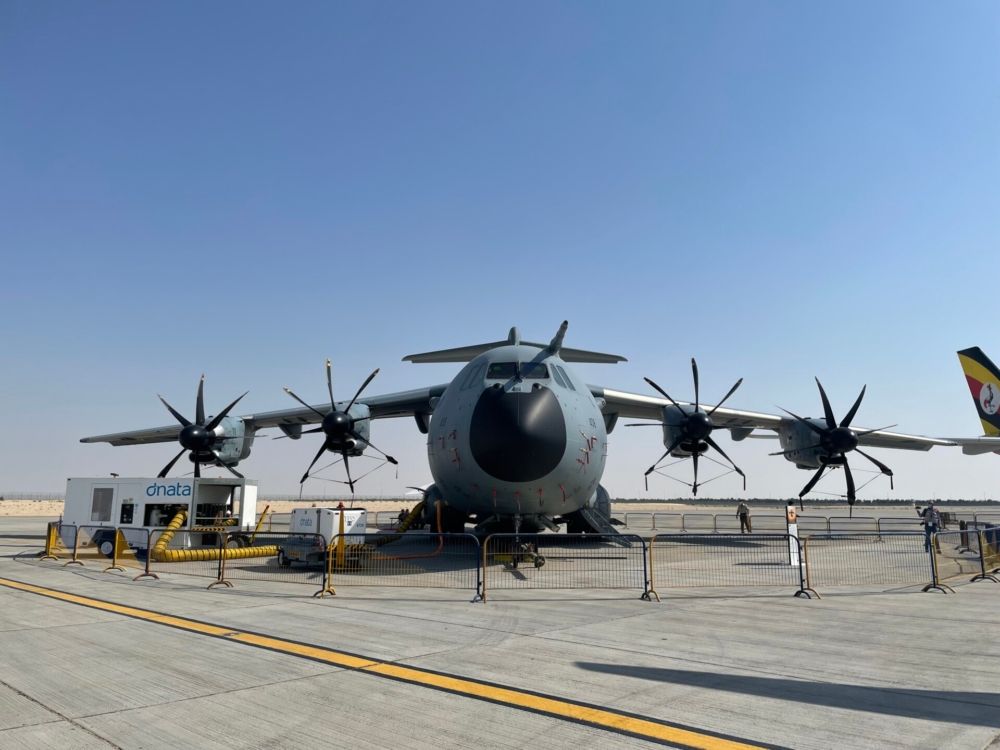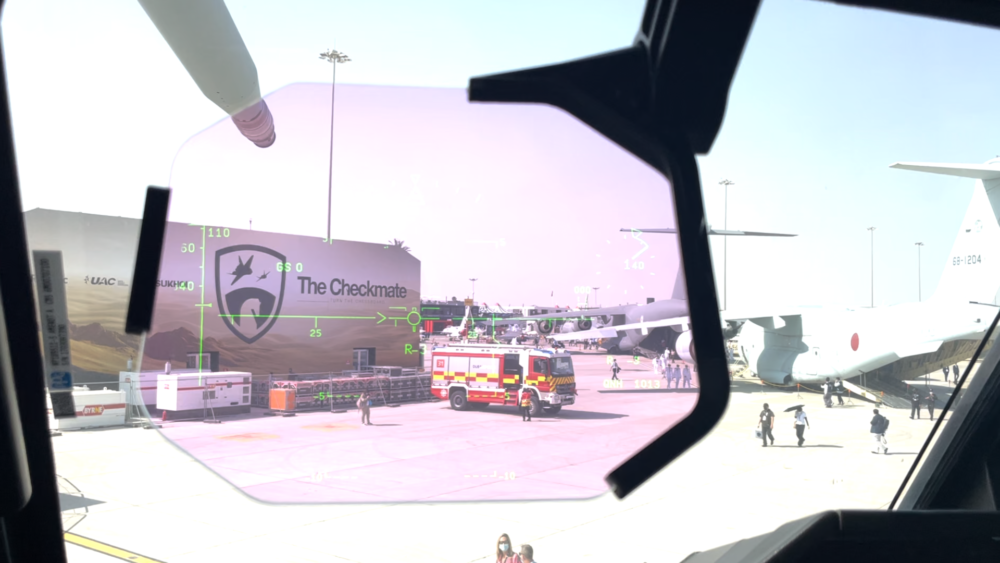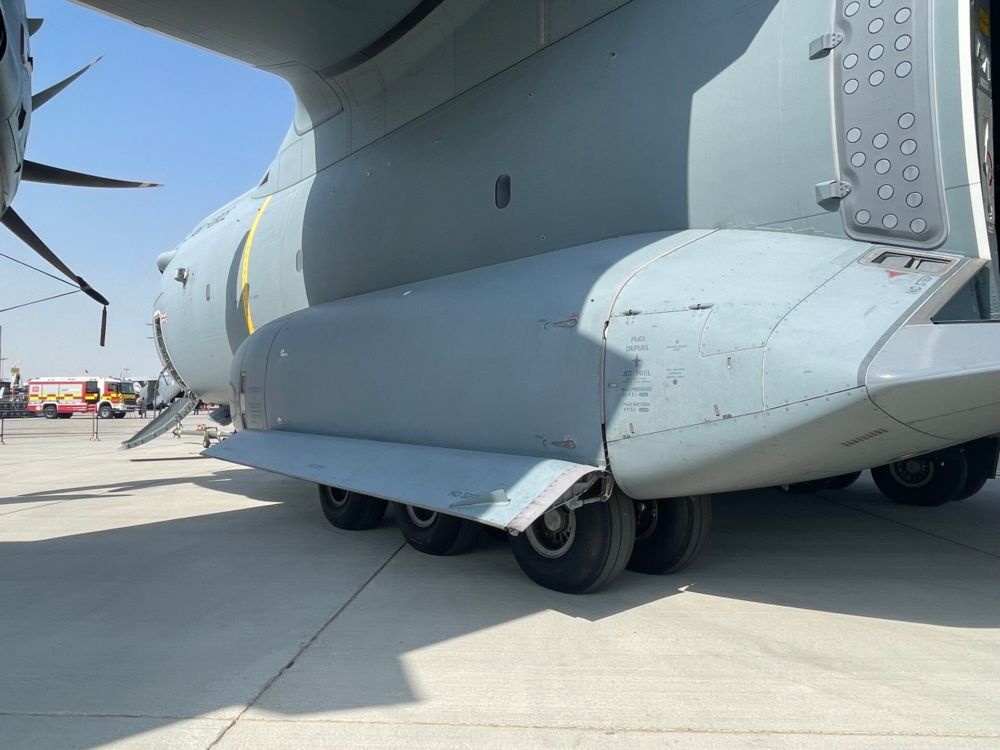The Kabul airlift is the biggest mass evacuation since the second world war, with more than 120,000 people moved out of the city. The UK’s Royal Air Force (RAF) moved around 17,000 of them, using a combination of C-17s, C-130s, and the Airbus A400M Atlas. The A400M hasn’t had the easiest introduction into service, but it more than proved itself in this operation.
Operation Pitting
The UK’s RAF evacuated a total of more than 17,000 people from Kabul under ‘Operation Pitting.’ Using the C-17, the C-130, the A400M, and the A330 Voyager, the teams undertook more than 100 evacuation flights, 31 of which were conducted by the A400M. A relative newcomer to the RAF fleet, with seven years in service, the Airbus aircraft is the future of the RAF’s heavy-lift capabilities, and was a big asset to the force during the Kabul airlift.
During the recent Dubai Air Show, Wing Commander and Air Capabilities Advisor Ed Horne introduced Simple Flying to the A400M, and described its role in the airlift. He noted,
“With the A400M, we flew 31 missions and 225 hours. On our largest passenger mission, we carried 213 people, the aircraft is designed to carry 160 passengers normally, but we knew how important it was to evacuate as many people as we could.”
During those missions, the A400M also shifted 428 UK military personnel and 113,000 kg of freight. Over the 31 flights, the type airlifted a total of 3,538 evacuees. While other aircraft types were also involved in this historic mission, the A400M proved itself to be a versatile and crucial piece of equipment, as Horne explained.
Why the A400M was so important
One of the first key attributes of the A400M that made it critical to Kabul operations was its impressive range. The A400M can fly to a maximum of 4,100 NM, although this reduces to 2,000 NM with its maximum 37 tonnes of payload. That ensured it could get to and from Kabul with fuel to spare, which turned out to be a crucial quality.
The UK RAF were based in Dubai, just over 900 miles southwest of Kabul. However, with Iran’s airspace closed to the military, the aircraft had to take the long way around, making the trip more than 1,000 miles in total. Horne recollected a mission on May 15th, when the endurance of the A400M really came into its own. He said,
“On the 15th of May, the crew arrived overhead the airport to discover the runway was closed, because a small aircraft had been abandoned on the runway by the Afghanistan Air Force. And of course, the endurance of the A400M meant that it could hold overhead the airfield while the runway was cleared. On the final approach - fuel is now burning down, fuel is tight - on the final approach some vehicles crossed the runway. It was quite chaotic at Kabul airport, so they had to perform a go around and make another approach but they still had enough fuel to do that.”
Having successfully landed at the airport, another aspect of the A400M’s features proved to be invaluable. Although the Taliban had not reached Kabul at that time, as the plane landed, the airport came under attack. Thankfully, the flight crew were protected from stray bullets and shrapnel by the A400M’s Kevlar flight deck armor.
Enhanced Vision System ‘saved our backsides’
The second example of the A400M’s impressive capabilities took place on May 26th, when there was a terrible bombing outside the gates of the airport. Kabul is renowned for having poor visibility, sitting as it does in a ‘bowl’ between mountains and permanently shrouded in a blanket of woodsmoke. Add into that the chaos from the bomb going off and then the runway lights going out at just the wrong moment, and the crew of the approaching A400M could have been in big trouble.
But, as Horne recalls, using a combination of night-vision goggles and the Enhanced Vision System installed on the Airbus, the crew was able to land safely in the pitch dark and with thick smoke blanketing the runway. He said,
“The Enhanced Vision System was able to cut through the smoke and allow the crew to positively identify the runway, which had no lights. I spoke to the captain of the aircraft, and he said, “It's not a date, I will forget in a hurry; one of my most challenging in 25 years of flying. The Enhanced Vision System is an amazing piece of kit and an essential tool to a situational awareness in night operations. It pretty much saved our backsides today.” He was very grateful.”
Added to these lifesaving features, the A400M has no issue operating at the altitude of Kabul. While not the highest airport, it is located at around 7,000 feet (2,200 m) above mean sea level, which was not a problem for the Airbus.
While it wasn’t so important for Kabul, the A400M also has impressive short unpaved airstrip performance. It can land virtually anywhere, even on airstrips under 750 m/2,500 ft, still retaining a payload of up to 25 tonnes and with enough fuel for a 500 NM return trip. Thanks to the many wheels of the A400M, it has many brakes, and Horne noted that it has impressive stopping abilities.
What’s next for the RAF and the A400M?
Wing Commander Horne started that the low-level flying training course for the A400M is now complete, and that this will soon be rolled out to the frontline crews. The next step is air to air refueling, something that the A400M is already equipped to do, but for which additional training is required. He noted,
“Airbus has done a great deal of the certification of all of the capabilities on the aircraft. When we receive those capabilities, we then go into a process of designing and delivering training courses so that our frontline pilots can operate the aircraft. We’re hoping to have that as a refuelling receiver capability later on this this year, which will vastly extend the range or the endurance of the aircraft.”
The A400M is gradually replacing the role of the C130 in the Royal Air Force. It’s a plane with huge capacity, as much as a C17, but with the additional capabilities of landing on rough strips. It’s the future of the RAF, and a very impressive bit of kit.


